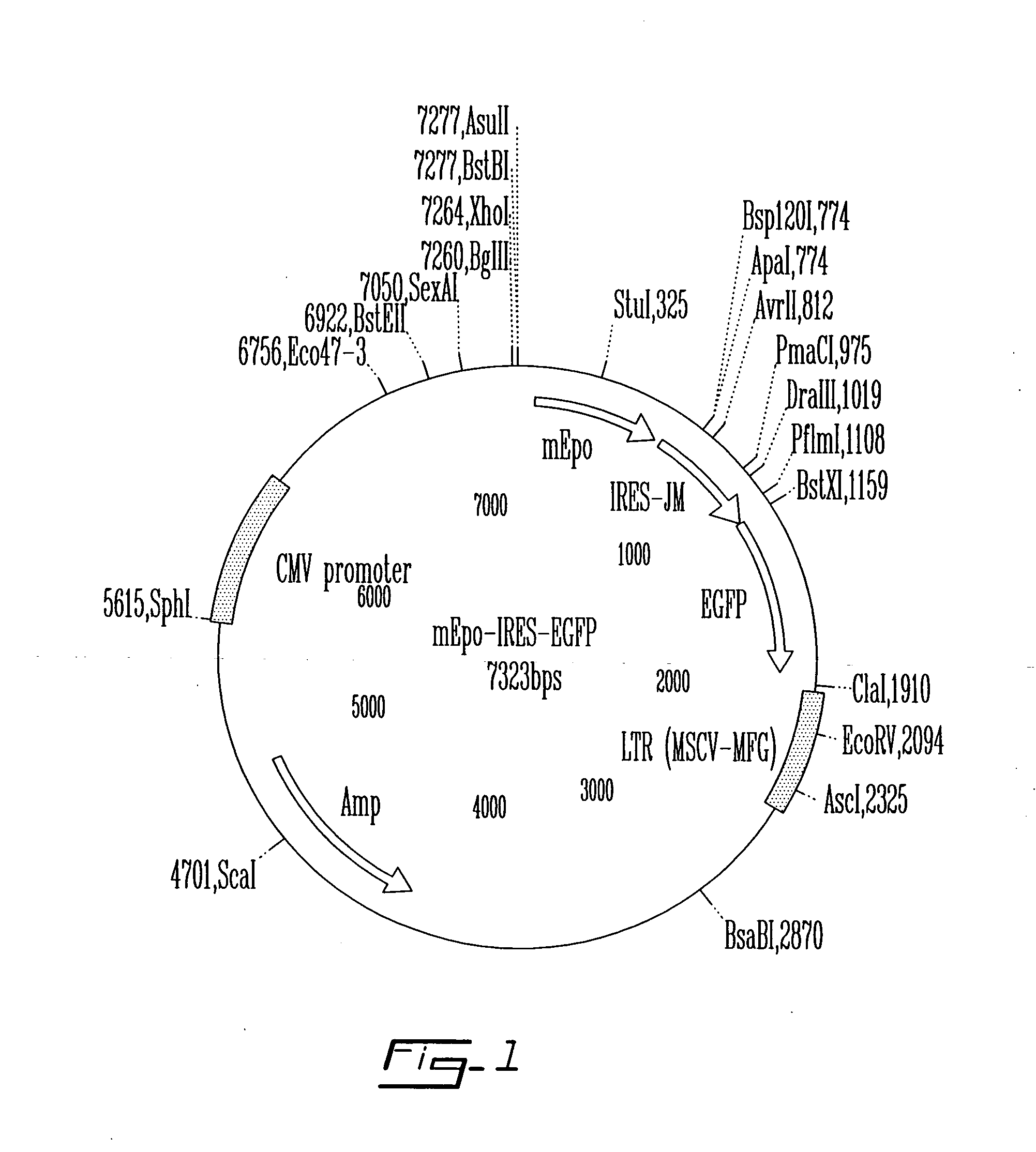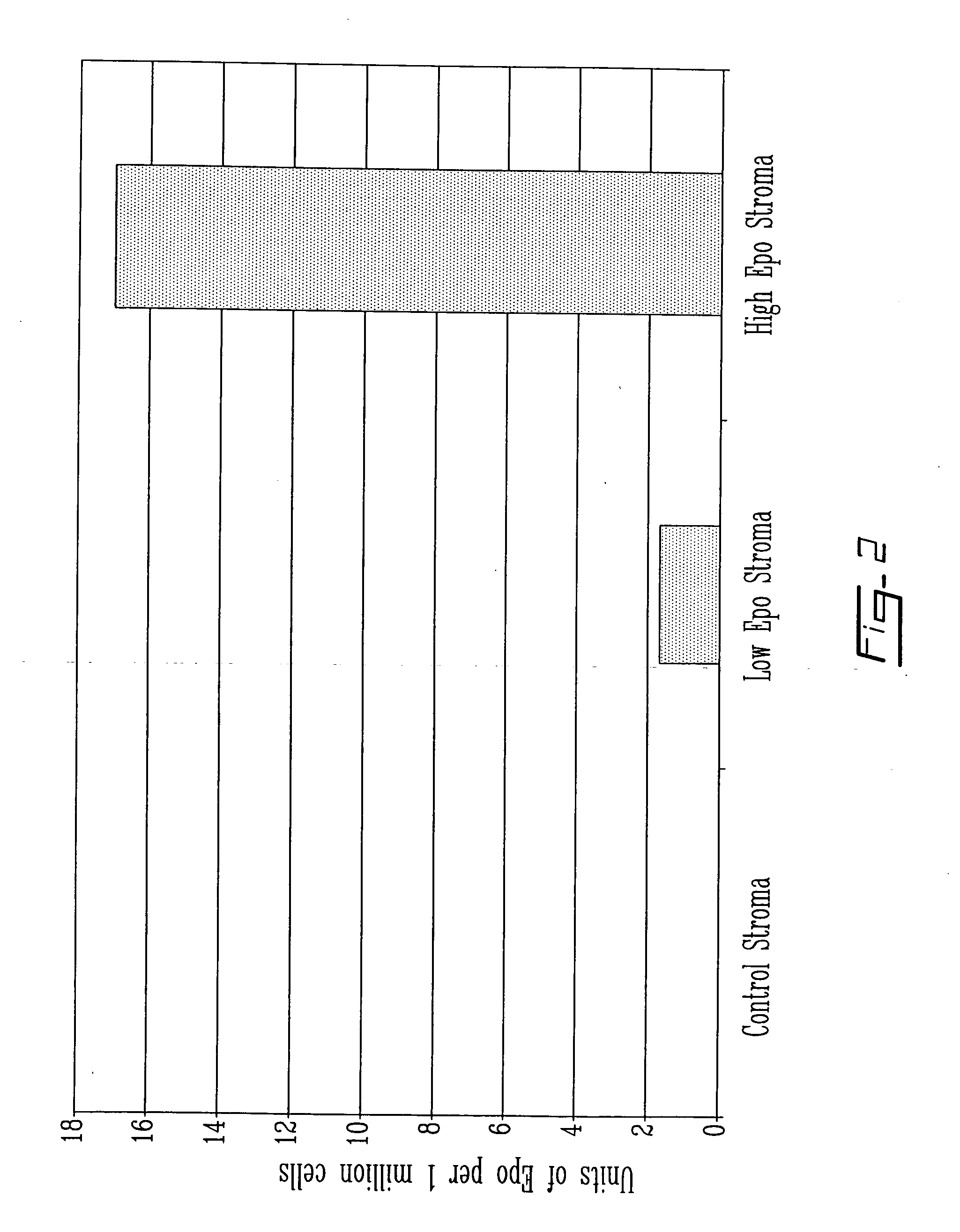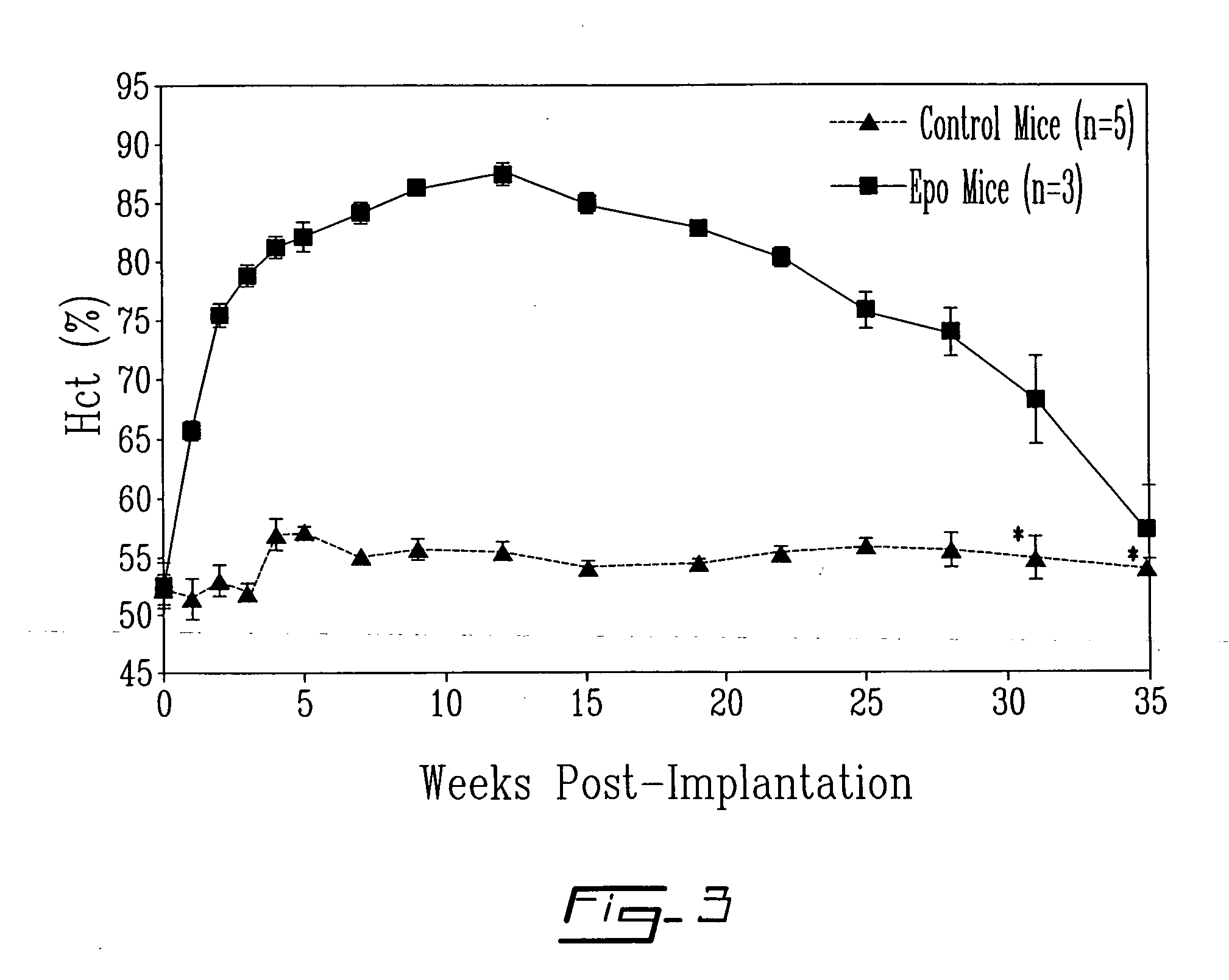Cultured stromal cells and uses thereof
a technology cultured cells, which is applied in the field of genetically engineered autologous stromal cells, can solve the problems of difficult growth and transplantation, large quantity of primary cells to be harvested, and drawbacks associated with the use of autologous stromal cells
- Summary
- Abstract
- Description
- Claims
- Application Information
AI Technical Summary
Benefits of technology
Problems solved by technology
Method used
Image
Examples
example i
Erythropoietin Secretion by Rat Bone Marrow Stromal Cells Following Retroviral Gene Transfer
Erythropoiesis in mammalian bone marrow is primarily regulated by the glycoprotein hormone, erythropoietin (Epo). Recombinant human Epo is commonly utilized for the treatment of Epo-responsive anemias. The administration of recombinant proteins, such as Epo, in acquired and inherited disorders, is often characterized by their suboptimal pharmacokinetics, the requirement for repeated incommodious injections, and cost to the patient. These impediments have incited the development of novel cell and gene therapy strategies. One approach is to use gene-modified bone marrow stromal cells, also referred to as mesenchymal stem cells (MSCs), to impart sustained systemic secretion of a therapeutic protein. MSCs are appealing as vehicles for beneficial gene products as they can easily be isolated from bone marrow aspirates, expanded in vitro, transduced with viral vectors, and maintained in vivo. One ...
example ii
High-Level Erythropoietin Production from Genetically Engineered Bone Marrow Stroma Implanted in Non-Myeloablated, Immunocompetent Mice
Autologous bone marrow stromal cells are appealing as a cellular vehicle for delivery of therapeutic proteins. They can be readily harvested from donors without the need of mobilization regimens, are easily expanded in tissue culture and are amenable to genetic engineering with integrating viral vectors. Their penultimate use in transgenic adoptive cell therapy of disease will be dependent upon their capability to engraft in non-myeloablated, immunocompetent recipients. To test this, it was determined whether intra-peritoneal implantation of isogenic stromal cells retrovirally-engineered to secrete mouse erythropoietin (mEpo) would lead to a rise of the number of red blood cells with time. The mouse Epo cDNA into a bicistronic retroviral vector comprising the green fluorescent protein (GFP) reporter gene downstream of an internal ribosome entry sit...
example iii
Dexamethasone Regulated Erythropoietin Secretion by Bone Marrow Stromal Cells Following Retroviral Gene Transfer
Marrow stromal cells are attractive as a cellular vehicle for the delivery of recombinant proteins, such as erythropoietin (Epo), as they can easily be isolated from bone marrow aspirates, expanded in vitro, transduced with viral vectors, and maintained in vivo. Regulatable expression is vital in therapeutic applications where continuous transgene expression would be deleterious. Marrow stroma can be engineered with a glucocorticoid-inducible retroviral vector developed in our laboratory and that transgene expression is inducible with dexamethasone and repetitively reversible. The objective of the present investigation was to explore this drug-inducible genetic switch to provide “on-demand” secretion of Epo. A retroviral construct has been generated, GRE5mEpoGFP, comprising the mouse Epo cDNA, an internal ribosome entry site, and the green fluorescent protein (GFP) gene,...
PUM
| Property | Measurement | Unit |
|---|---|---|
| Electrical resistance | aaaaa | aaaaa |
Abstract
Description
Claims
Application Information
 Login to View More
Login to View More - R&D
- Intellectual Property
- Life Sciences
- Materials
- Tech Scout
- Unparalleled Data Quality
- Higher Quality Content
- 60% Fewer Hallucinations
Browse by: Latest US Patents, China's latest patents, Technical Efficacy Thesaurus, Application Domain, Technology Topic, Popular Technical Reports.
© 2025 PatSnap. All rights reserved.Legal|Privacy policy|Modern Slavery Act Transparency Statement|Sitemap|About US| Contact US: help@patsnap.com



